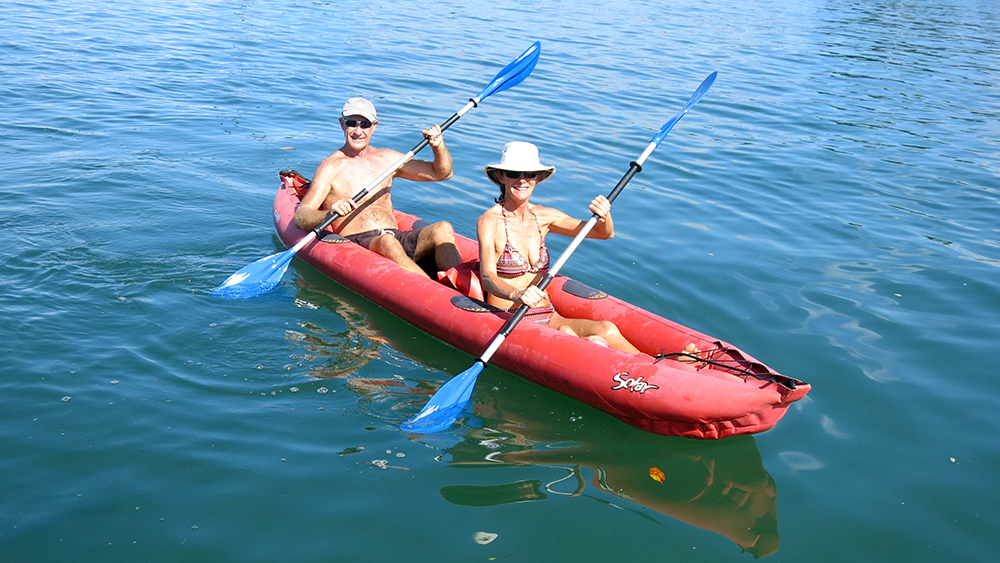
Kayak is the easiest way to get around in the Isla Las Perlas
Isla Medidor was one of the stranger islands that we visited in western Panama. It is owned by an Italian who has built a luxury palace on the top of the hill with a helipad and a monorail to carry his VIP guests up from the dock. We dropped anchor in an inlet on the western side of the island and the place appeared to be deserted so we decided to have a look around. We hiked stealthily up the hill feeling a little uneasy and as we approached the house we suddenly heard a garage door opening and an engine start up. We turned tail and legged it back to the beach expecting thugs with guns on quad bikes to roar around the corner at any minute. We felt like we were in a Bond film!
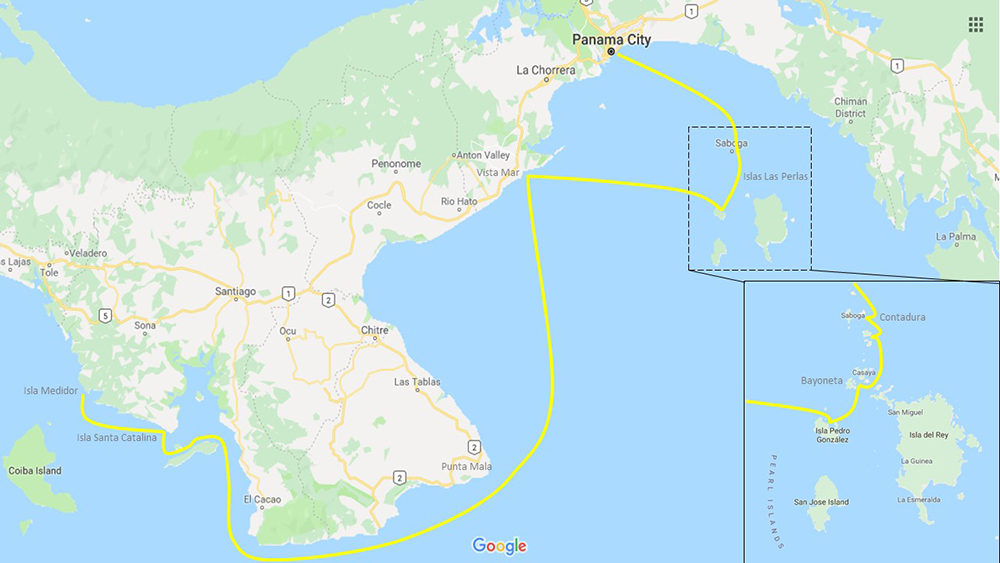
The village of Santa Catalina is a well known surfing and diving destination and has developed a low key tourist infrastructure with a few small restaurants and guest houses. We dropped anchor in the channel between the island and the mainland and went ashore to explore the village. Landing the dinghy on the beach was difficult due to the swell but at high tide we could enter the river mouth and tie up in the swampy lagoon behind the village. I fell in love with the place when I found it had a bakery and a fabulous fruteria. After struggling to find fresh produce for the last few weeks this was an Aladdin’s cave of fruit and veggies.
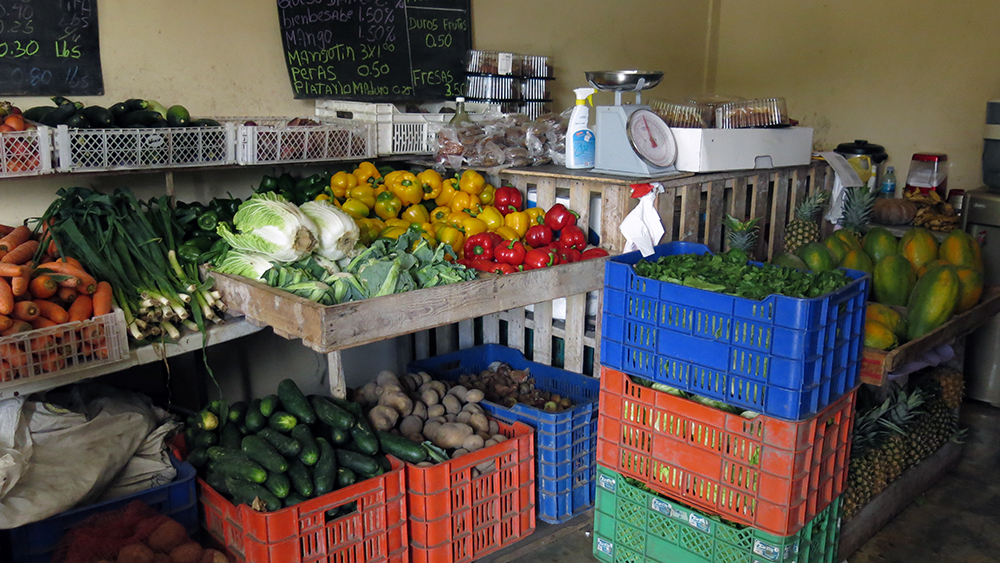
The Aladdin’s Cave of fruit and veggies in Santa Catalina
Also anchored in the channel was Aschanti IV, a gorgeous 35m schooner built in Germany in 1954. Kalle, the captain, invited us over for a barbeque one afternoon and we had a great time; the two clients and six crew were really welcoming and treated us to some delicious food and lovely wine. It was interesting to have a look around the deck; the fixtures and fittings were much the same as ours but much larger and shinier, we admired the gleaming brightwork and brilliantly buffed brass and steel.
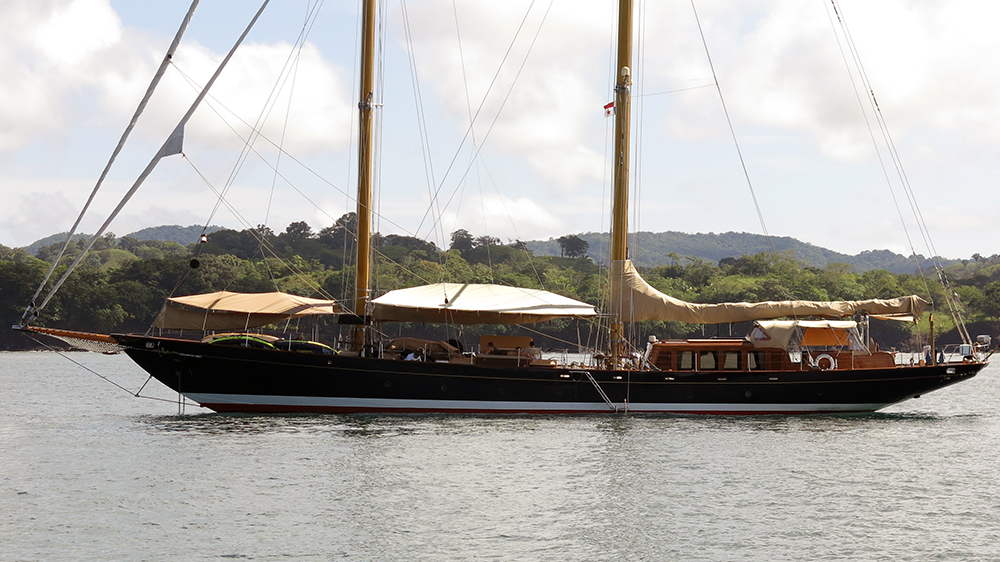
Aschanti IV anchored in the channel at Isla Santa Catalina
Punta Mala on the Azuero Peninsula marks the boundary between western and central Panama. There are no good anchorages to hide from the southerly swell which pounds the shore at this time of year so we made an overnight passage from Isla Cebaco to Vista Mar. On the first day the wind was light but a favourable current helped keep us moving and we rounded Punta Mala during the night. The next day the wind picked up but then we had the current against us. We motor-sailed up the Gulf of Panama and arrived in the marina at Vista Mar in the late afternoon.
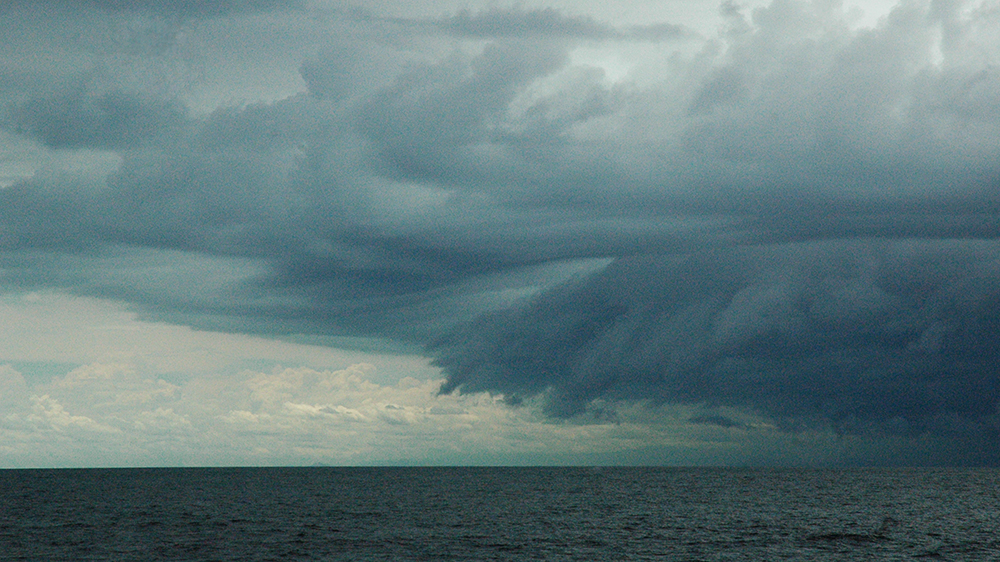
This storm cloud hanging over Vista Mar looked like a mushroom cloud
Tying up at the dock at Vista Mar was fraught with problems. The Pacific coast of Panama has 3-4m tides and when spring tides combine with a moderate southerly swell strong currents race through the marina. Boats in the berths are pulled and pushed around, straining the mooring lines and squeezing fenders hard against the dock. Several staff as well as other cruisers helped us control the boat as we entered the berth and secure our lines – a big thanks to them.
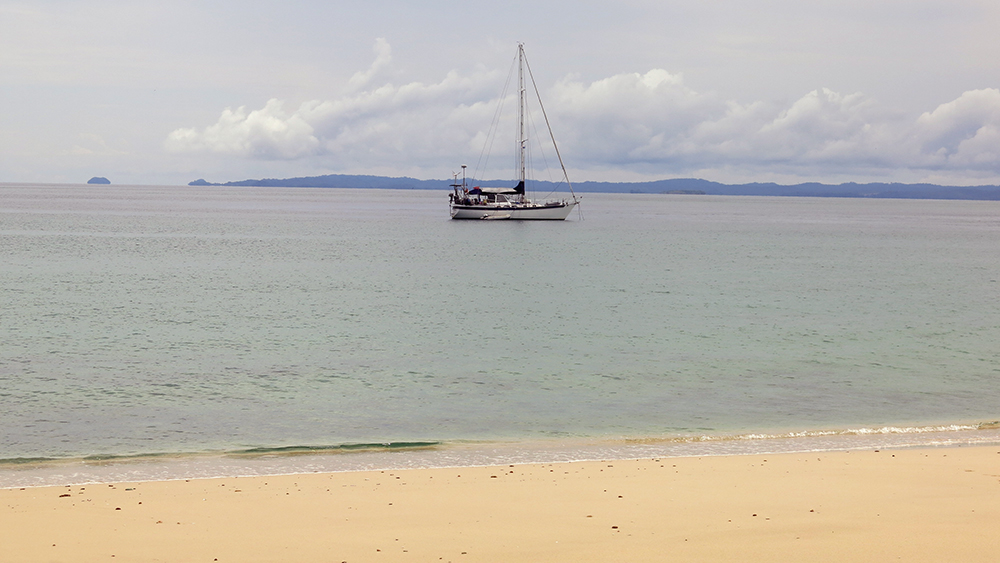
Distant Drummer anchored off Isla Chapera
The marina was full of cruising boats and friendly folks and within a few days we had settled in. We hadn’t been in a marina for six months so it was fun to be back in a cruising community. Our main reason for coming in was to fill up our propane tanks but we also wanted to have a look around as this was the marina where we planned to leave Distant Drummer when we go to Europe this Christmas. We liked the pool and the other facilities, the rates were good and staff were helpful and pleasant. The only problem was the currents and people were taking drastic measures to secure their boats; doubling or tripling up their mooring lines, reinforcing ropes where they wrap around cleats or even replacing them with chains. However, it is a seasonal thing and during the dry season the wind and swell are generally from the north making the marina much a more comfortable place to be.
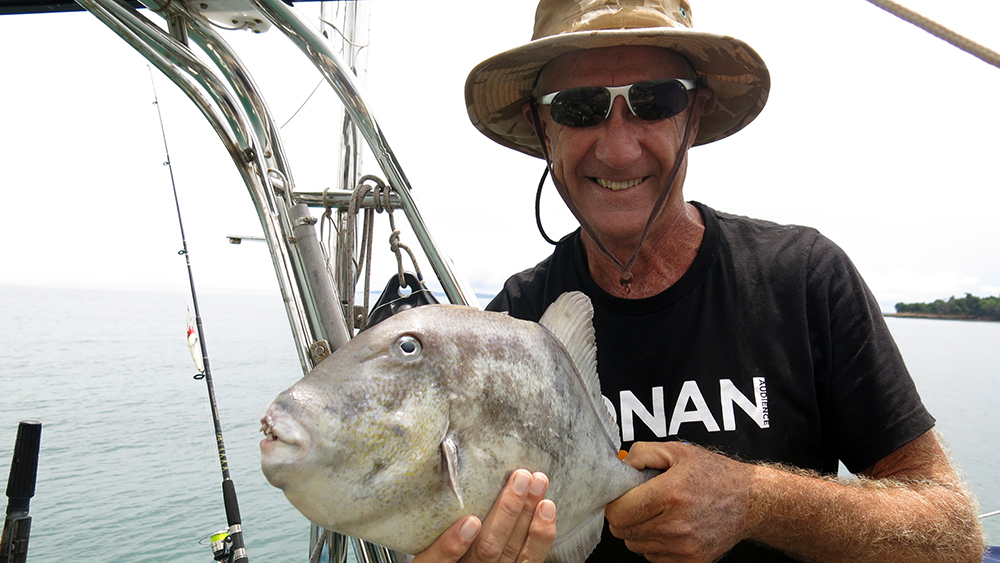
Neil caught a triggerfish which made delicious fish tacos
We were not ready yet to settle in for the long term and after a week we left the marina and sailed across the Islas Las Perlas, a group of islands lying right in the middle of the Gulf of Panama. The first island we visited was Isla Pedro Gonzalez where we ran in to S/V Mis Gale, friends we had first met in Golfo de Nicoya in Costa Rica. We spent several evenings with Gale and Slim drinking beer and catching up on news.
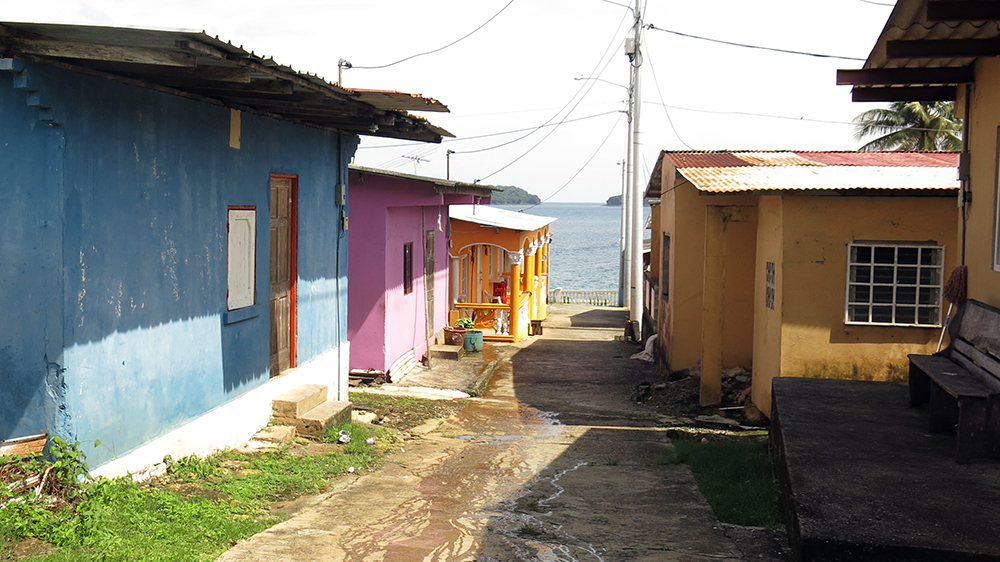
The colourful village of Pedro Gonzalez
Although most of the Las Perlas islands are uninhabited or have a just small fishing community, several have been developed for tourism. The Ritz-Carlton have built a marina, resort and an airport on Isla Pedro Gonzalez which all appeared completely underutilized, maybe they get busy during the dry season. We anchored off the northern beach where many pangas (fishing skiffs) were pulled up in front of the local village. We had a walk around and admired the brightly painted houses, greeted the locals who smiled cheerfully and then went back to washing their clothes or tending their nets.
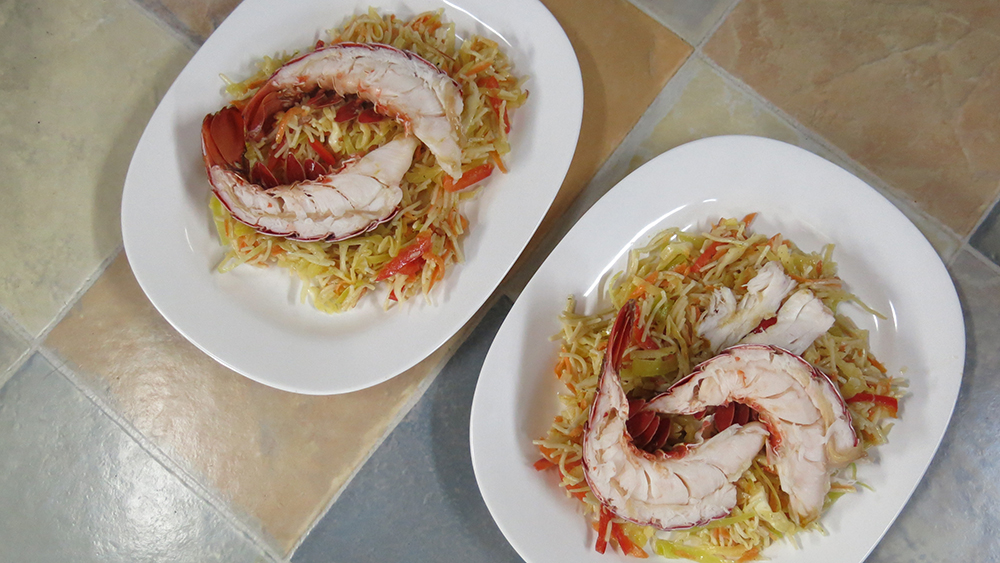
We traded a fistful of dollars and a couple of beers and had a yummy lobster lunch
After a few days we moved around the east side of the island where there is a large, very scenic bay with a fabulous beach. The big tides here mean that anchoring and planning a route through the shallow waters between the islands require some mathematical dexterity, but the wide swathes of golden sand which are revealed at low tide are picture postcard perfect.
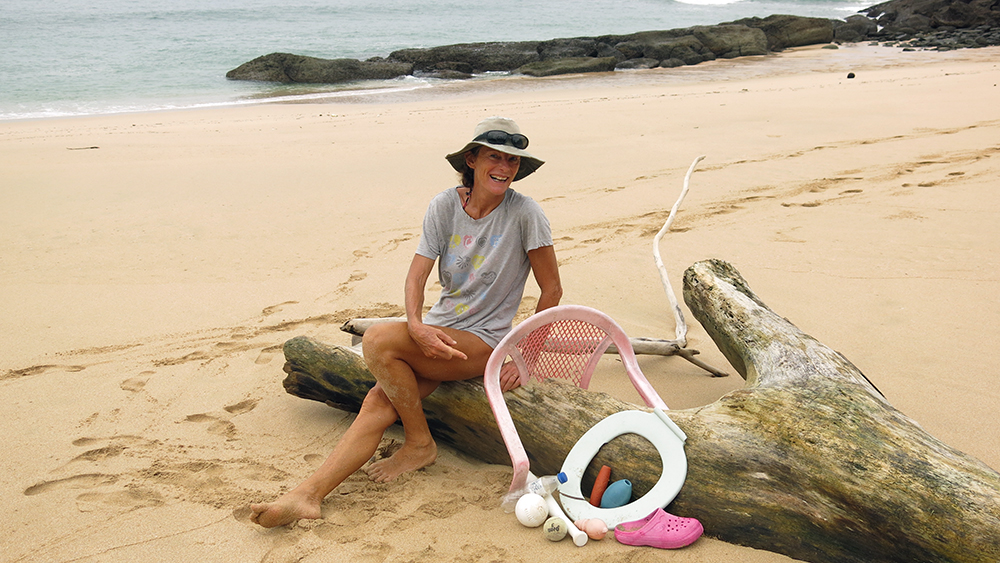
Still life of the garbage found on Isla Bayoneta
Unfortunately the strand line on most of the beaches in Panama (and many other countries we’ve sailed through) is cluttered with plastic garbage. This was certainly the case on the beautiful white sand beach on the west side of Isla Bayoneta. We anchored on the east side of the island and took the dinghy around to look for cowry shells which we’d heard were plentiful there. Plastic bottles, chairs, shoes and nylon fishing nets as well as dozens of other everyday plastic items were strewn along the tide line. This debris disintegrates into micro-plastic fragments much more quickly on land and then gets washed back out to sea to be ingested by birds and fish. It’s a huge global problem . . . grrr, we hate plastic!
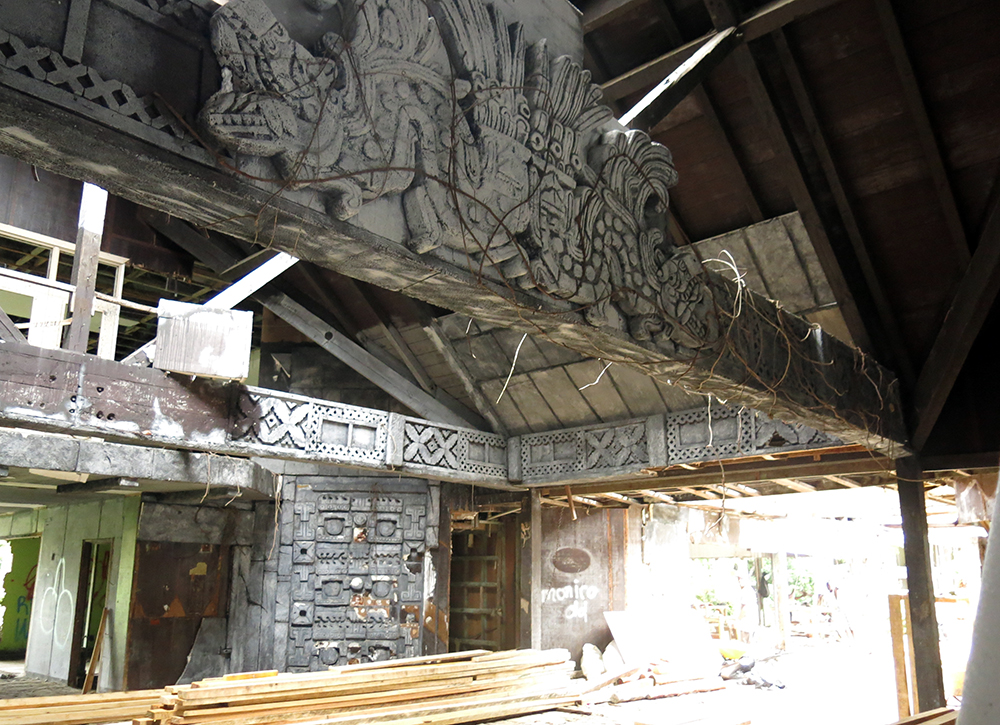
Faded glory: intricate carvings decorate the dining room of the Hotel Contadora
Isla Contadura is the most well known of the Las Perlas Islands, probably because several seasons of Survivor have been filmed there. In the 70’s the Hollywood jet set flocked to the exotic and luxurious Hotel Contadura and the Shah of Iran lived here for several months in 1980 when he first went into exile. When the glitterati moved on to something new the island became popular with the Colombian rich and (in)famous. The Hotel Contadura is now just a shell and is being used as a workshop for the next survivor series currently being filmed on the nearby Isla Pacheca.
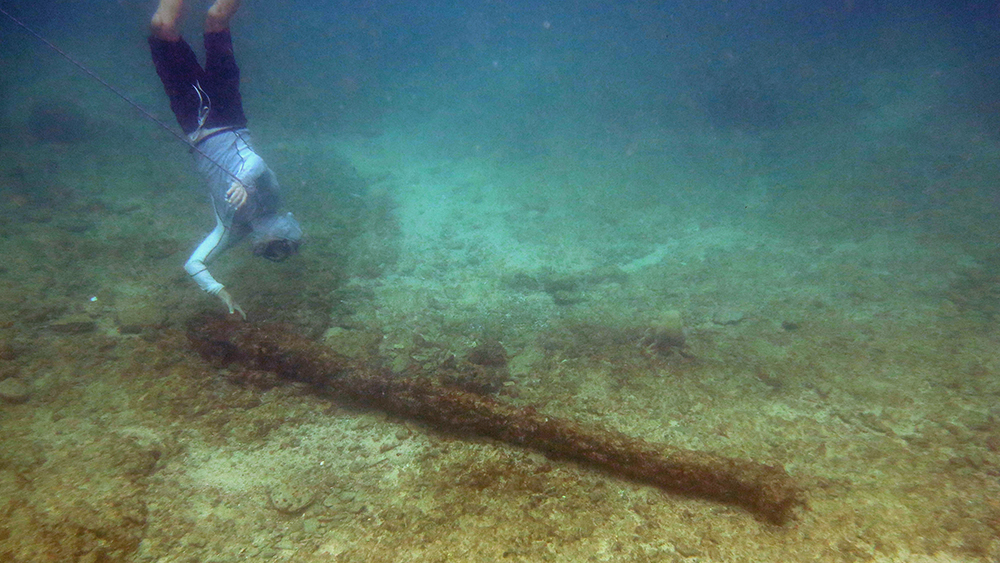
Neil discovered a “relic” from the galleon San Jose at Isla Contadura
During the 17th century Spanish ships loaded with gold and silver from Peru passed by Islas Las Perlas to reach Panama where the treasure was hauled overland then shipped on to Spain. In 1631 a galleon named San Jose hit a rock in the southern part of the archipelago and was towed to Contadura where the Spanish had a counting house for pearls collected in the islands. The wreck site was close to where we were anchored so we thought we’d snorkel over and take a look. We didn’t discover a lost hoard of gold or silver reals but we did find an 2m long iron pole which was encrusted with seaweed and coral and looked pretty ancient. It could have been a rudder pin or the cross bar of an anchor from a galleon – who knows!
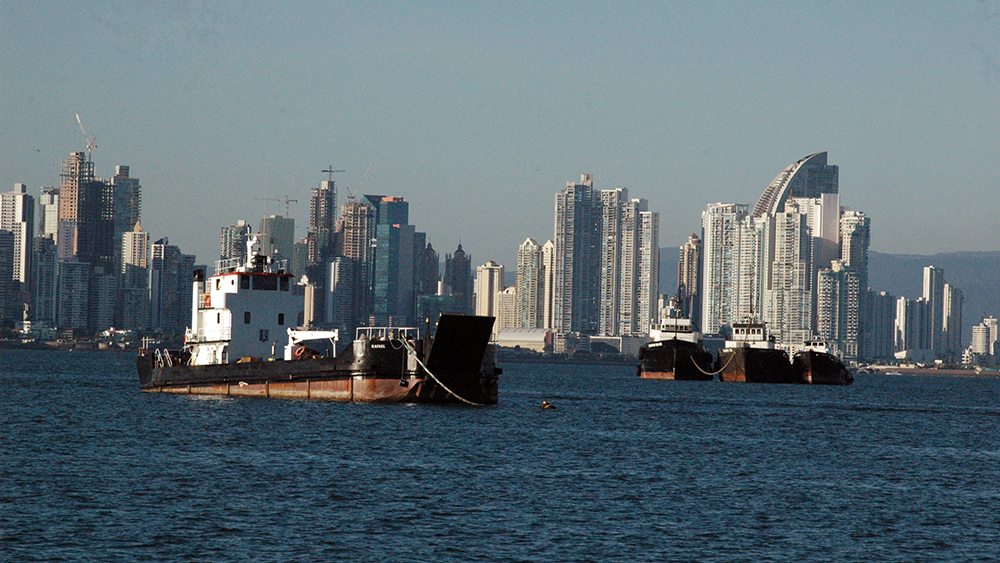
The anchorage at Las Brisas in Panama City
Now we are anchored at Las Brisas in Panama City surrounded by about a hundred and fifty skyscrapers and fifty container ships. From the anchorage we can see the Bridge of the Americas and watch ships passing to and from the Canal. What a contrast to the forested hills and empty beaches just 30NM away. We can’t wait to hop on a bus and start having a look around.
More soon from the big bad city.
Suzy
